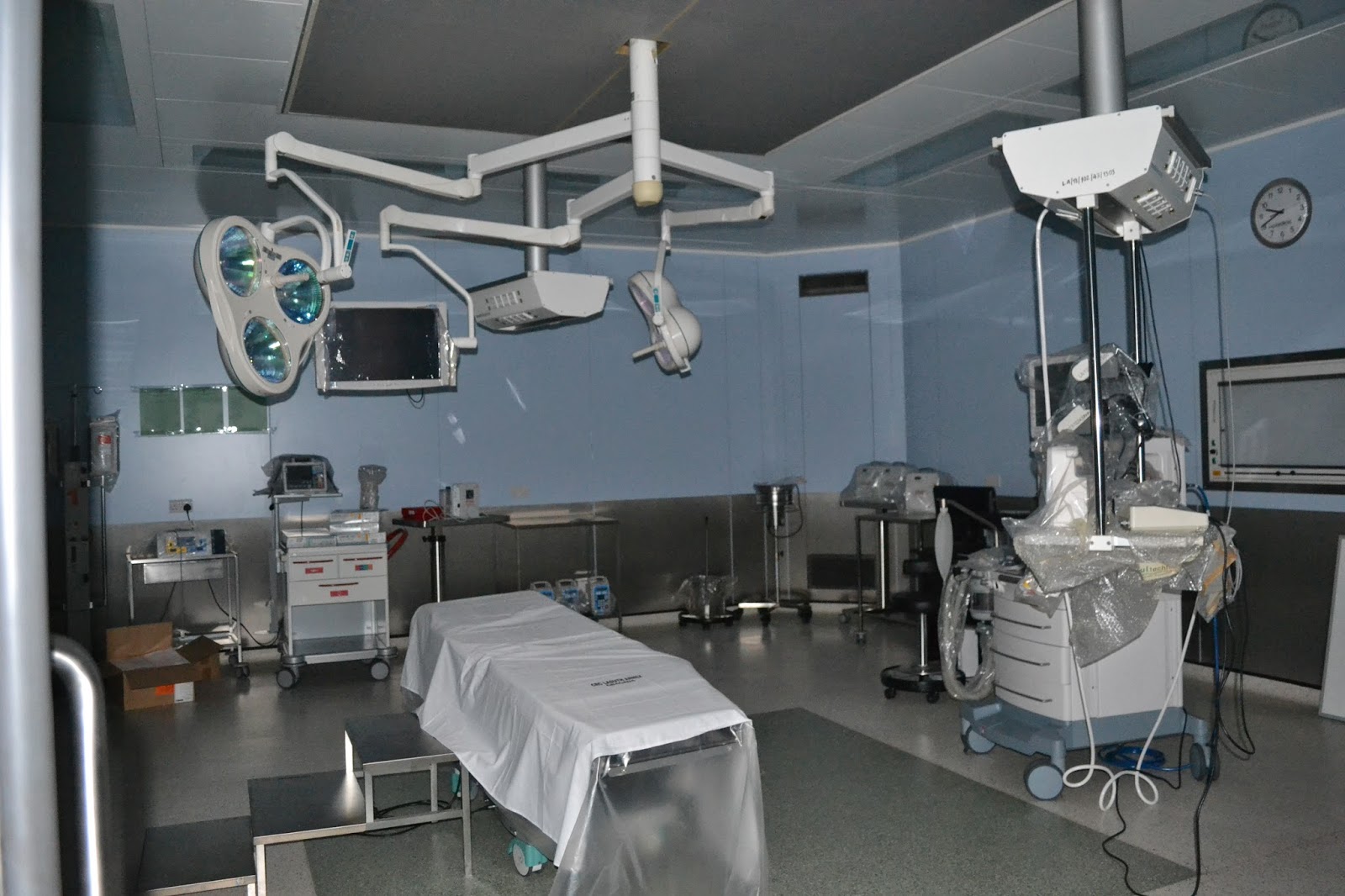
Capital Projects & Infrastructure
Team, PwC Nigeria.
E-mail: eniola.akinsete@ng.pwc.com
As Africa’s most populous country and with an average five year real growth rate of 5% between 2011 and 2015, Nigeria is ranked as one of the fastest growing economies in the world. Despite this position, the nation’s activities in healthcare account for less than 5% of the country’s GDP .
With the general downturn of the economy, it is expected that there will be significant strain on public healthcare expenditure (which currently accounts for about 30% of the country’s total healthcare spend). As a result, public healthcare institutions, especially at the tertiary levels, will be faced with increased difficulties in bridging their current infrastructure deficit. This, even as their ability to increase Internally Generated Revenues (IGRs) remain constrained by limited funding for introducing new or expanding existing services.
However, collaborative arrangements between the public and the private sectors, supported by enabling frameworks and systems, can provide a sustainable solution to addressing this gap across the country.
Health sector overview
In 2015, Nigeria had over 3,500 healthcare institutions with about 27% being public sector owned. The public sector institutions include 54 federal tertiary hospitals as well as state owned general hospitals, teaching hospitals and primary health centres. The private sector participation is also evident across the three tiers of healthcare service delivery with majority of private sector activities domiciled at the secondary level.
Despite the high number of available medical institutions, the country still records below average health statistics due to the inability to provide quality healthcare to match the nation’s changing epidemiology, obsolete medical devices /equipment, inadequate basic infrastructure, among other challenges.
Significantly, the nation is seeing a change in the disease burden mix, with Non Communicable Diseases (NCDs) growth outpacing infectious diseases. This rise in NCD burden has not been matched by an increased capacity to treat locally contributing to the growth in medical tourism. This is not necessarily because there is a lack of technical expertise but the infrastructure to provide treatment or support the patients are largely unavailable. Although estimates vary depending on the source, it has been reported that about 30,000 Nigerians cumulatively spend about US$1 billion annually on healthcare services outside the country, with 60% of patient requests in four major specialist areas: cardiology, orthopaedics, renal dialysis, and oncology . In 2013 alone, medical spend per tourist was recorded as between $7,475 and $15,833 . Recent trends show that purchase of foreign healthcare services have significantly increased especially as medical fees amounted to a significant chunk of foreign currency requests in the last one year.
To take advantage of this market gap, the country has, in recent times, seen an increasing number of large scale green-field hospital projects by private sector participants. These players, who aim to establish fully equipped, high quality secondary to tertiary healthcare institutions, usually require 18 to 24 months from financial close of funding process to get the hospitals operational. This implies that though the private sector contribution will start to bridge the infrastructure gap, lost revenue to medical tourism activities will continue to increase for the next three to five years (at the least) until operational activities in some of these green-field projects commence on a full scale.
The infrastructure challenge
With over 160,000 hospital beds as at 2015, the country suffers from a very low bed per thousand population of 0.9 (less than one) in comparison to countries such as South Africa at 2.29 and Japan at 13.32 in 2013 . This low statistic has been a trend over the years as the number of beds has grown below GDP rates over the last five years. In addition to the lack of physical infrastructure required to adequately address the population base, existing structures suffer from obsolete equipment and lack of requisite infrastructure to expand/deepen medical specialisation. This has significantly limited the ability of healthcare institutions, in particular the public sector hospitals, to align their services to the changing disease trends. The ultimate implication of this is a limitation in increasing IGR levels within the institutions despite rising demand for services.
Constraints experienced by public tertiary hospitals in increasing IGRs can be further reviewed from the patients’ purchasing power standpoint. Whereas, the government’s objective with public health facilities (including tertiary centres) is to ensure patients at low income levels can access quality care; there are obvious benefits to those centres attracting patients across the income spectrum. Higher income patients often can pay more economic fees for their care which may enable the hospitals cross subsidise care for lower income patients. The government can also provide higher quality care for its citizens in the lower income levels at affordable rates by utilising health insurance schemes. It is worthy of note that less than 5% of the entire population are registered in one form of health insurance or the other implying that private healthcare expenditure is usually made via out of pocket payments.
In the hope of reducing the burden on their IGRs, some institutions have already started to explore ways of reducing the operational expenses by outsourcing some of their non-core services. However, this does not provide the required investments to address the infrastructure gaps in their systems.
The provision of and improvement in healthcare infrastructure has also been hindered by gaps in financing as the traditional funding model through fiscal budgets and IGRs have become increasingly inadequate. In addition, slower global growth suggests foreign aid budgets could decline resulting in a shortage in donor funding.
The PPP advantage
Evidence supports Public Private Partnerships (PPP) as a strategy to improving healthcare infrastructure and operations. PPPs involve long term collaboration between the public institutions and private sector participants and are characterised by the sharing of risks, responsibilities and rewards between partners. Public tertiary institutions have been referenced because they have the scale required to significantly bridge the country’s infrastructure deficit.
PPP arrangements provide a win-win situation for both the public and private sector players in healthcare as well as the general population. The institutions are able to develop the technical capabilities of their medical team and attract citizens from all income levels due to the provision of quality healthcare services. They also enjoy a reduction in their financial – and in some cases operational – burden, as these may be shared with the private sector partners depending on the PPP structure implemented. The private sector partners, on the other hand, are able to enter the market quicker due to the brownfield status of the public tertiary institutions. They also enjoy guaranteed revenue streams due to the higher patient traffic associated with public sector facilities as well as an increased ability to attract more patients with higher purchase power. The citizens benefit from the ability to access care without compromising the standards they aspire to have or are used to in foreign hospitals.
There is some suggestion that PPP-run healthcare facilities may raise costs making them inaccessible to lower income patients. However, this belief has been debunked in various parts of the world especially in similar economies through the implementation of innovative PPP structures. From research, structures utilised have had elements of Design, Build, Operate and Transfer. In some countries, various hybrid structures have been implemented and in the United Kingdom, the most popular structure has been the Private Finance Initiative (PFI) where the private sector finances infrastructure development for healthcare institutions. Whatever the structure, the overall objective remains the same – to provide quality healthcare to the citizens.
In the Indian state of Andhra Pradesh, medical treatment is provided to patients living below the poverty line (BPL) through the Arogyasri health insurance scheme at no cost to the patients.
The B. Braun Medical India Pvt Limited (a subsidiary of B. Braun Melsungen AG, one of the world’s leading healthcare suppliers headquartered in Germany), was selected to establish and operate dialysis centers in 11 state-run hospitals on a Build, Operate and Transfer (BOT) basis for a period of seven years starting from 2010. In return, the Government of Andhra Pradesh pays the B. Braun Medical Pvt. Limited, an agreed price (user charges) for every dialysis done. With this PPP model, the hemodialysis centers cumulatively host 111 hemodialysis machines in medical colleges and hospitals across the state thus providing services to more patients in comparison to the past.
In Nigeria, multiple models are being utilised but the most common is the arrangement in which government solely finances the infrastructure and contracts a private entity to operate the facility. This is the case of the Cardiac and Renal Centre, Lagos, which is a five year concession agreement between the Lagos State Government and a private sector entity.
Another project with the same arrangement is the Garki Hospital, Abuja. In 2007, the Federal Capital Development Agency (FCDA) signed a concession agreement with a private hospital operator for the management and operations of the hospital.
The Akwa Ibom Specialist Hospital was built by the state government but is being managed and operated by private sector players.
However, the PPP arrangement is different at the University College Hospital (UCH) Ibadan.The Cardiovascular Centre was designed, built and equipped by a medical equipment provider while the operational activities are being conducted by the UCH personnel. This has led to several successful treatments of cardiovascular diseases including open heart surgeries.
Key success factors
Without a doubt, legislation and an enabling regulatory environment are key to the successful implementation of PPP contracts. In addition, the mapping of social needs to the availability of resources as well as incorporating capacity building activities to the projects will further increase the successful execution of PPP contracts. It is also important to ensure an appropriate “partner – project” mix to guarantee that the overall objectives for the project are achieved.
To support the operations of the project, it is important that sustainable models for guaranteeing the payment of usage charges for patients are adopted, typically done by the implementation of appropriate health insurance schemes.
The way forward
The inability of the country to reduce medical tourism is fundamentally due to financing constraints, particularly for our tertiary institutions.
Therefore, it has become imperative that Nigerian public tertiary healthcare institutions explore innovative ways of bridging their infrastructure gaps. To do this, the institutions should consider mutually rewarding partnerships with the private sector to drive expansion projects on their existing platforms. These arrangements should be guided by regulations that ensure that the social good being promoted by the government is not eroded.
The management teams of these institutions should clearly articulate bankable expansion projects that are significant to the growth objectives of the institutions. Projects should align with demand and supply trends in the market and show articulated returns from both the social and financial perspectives. The latter will usually be determined by the PPP structure to be adopted. The PPP structure will also determine the criteria for selecting a suitable private entity partner. From a regulatory standpoint, government needs to explore ways of expanding the healthcare insurance scheme to cover more people.
Private sector players seeking to enter the market should take advantage of existing platforms by exploring areas of collaboration with players in the public sector to provide global standard healthcare institutions e.g. partnering with tertiary hospitals to fund expansion projects and / or sub-specialist centres to provide healthcare services that are currently accessed by Nigerians outside of the country. With these partnerships, the infrastructure deficit can be bridged and Nigerians, especially those who would otherwise seek medical treatment outside the country, can utilise locally available services. This is will also see to significant human capacity development as well as economic growth through job creation and preservation of the country’s foreign reserves.











